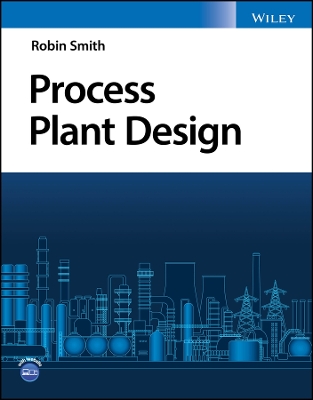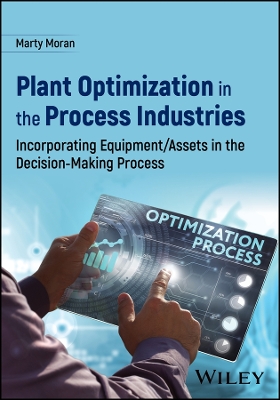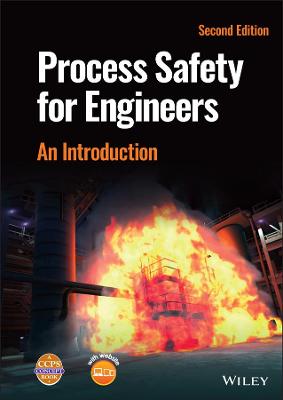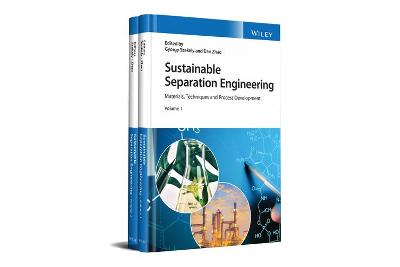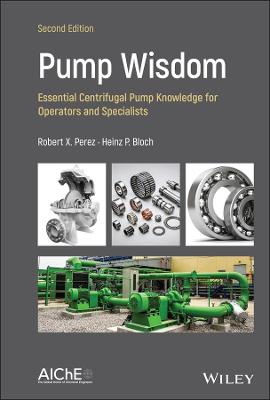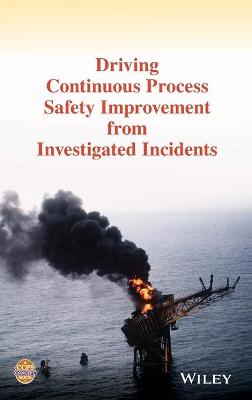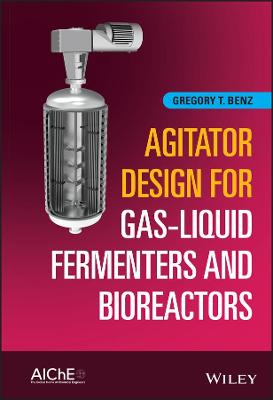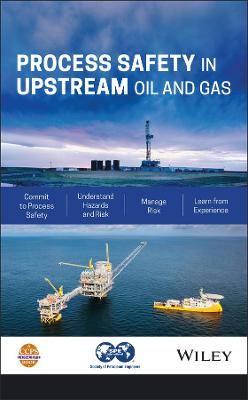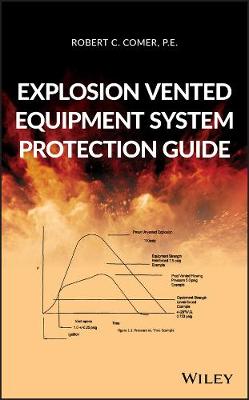Imidazoline Inhibitors for Corrosion Protection of Oil Pipeline Steels
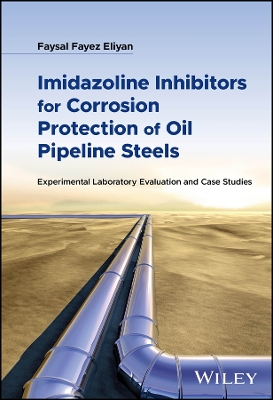 -10%
portes grátis
-10%
portes grátis
Imidazoline Inhibitors for Corrosion Protection of Oil Pipeline Steels
Experimental Laboratory Evaluation and Case Studies
Eliyan, Faysal Fayez
John Wiley & Sons Inc
03/2024
272
Dura
Inglês
9781119437536
15 a 20 dias
666
List of Abbreviations xiv
List of Symbols xix
1 Introduction 1
1.1 Importance of Corrosion Inhibition in Pipeline Systems 1
1.2 The Economic Consequences of Corrosion in the Oil and Gas Industry 3
1.2.1 Maintenance Costs 3
1.2.2 Downtime and Production Losses 3
1.2.3 Replacement Expenses 5
1.2.4 Increased Energy Consumption 5
1.3 The Environmental Consequences of Corrosion in the Oil and Gas Industry 6
1.3.1 Soil and Water Contamination 6
1.3.2 Air Pollution 7
1.3.3 Climate Change Contributions 7
1.4 Importance of Imidazoline Inhibitors in Oil Pipelines 8
1.5 Importance of Experimental Laboratory Evaluation of Imidazoline Inhibitors 10
1.6 Experimental Considerations for Imidazoline Inhibitors in Oil Pipeline Applications 11
1.7 Procedure for Experimental Laboratory Evaluation of Imidazoline Inhibitors for Utilization in Oil Pipelines 13
1.8 Field Testing Procedure for Imidazoline Inhibitors in Oil Pipelines 18
2 Chemistry of Imidazoline Inhibitors 22
2.1 Chemical Composition and Characteristics (Preparation and Types) 22
2.2 Mechanisms of Inhibition 35
2.3 Contact Angles of Adsorption 46
3 Testing Setups 48
3.1 Electrode Rotors and Stirrers 48
3.2 Concentric Cylinders in Autoclaves 52
3.3 Autoclave Systems 55
3.4 Crevice Testing Setup 57
3.5 In-situ Electrochemical/AFM Setup 59
3.6 Flow Loops 59
4 Experimental Methods 61
4.1 Electrochemical Evaluation of Imidazolines' Performance 61
4.1.1 Potentiodynamic Polarization 61
4.1.2 Electrochemical Impedance Spectroscopy 72
4.1.3 Open-circuit Potentials 87
4.1.4 Linear Polarization 91
4.1.5 Cyclic Voltammetry 95
4.1.6 Electrochemical Noise 96
4.2 Microscopic Evaluation 100
4.2.1 Scanning Electron Microscopy (SEM) and Profilometry 101
4.2.2 Transmission Electron Microscopy (TEM) 109
4.2.3 Scanning Kelvin Probe Force Microscopy 110
4.2.4 Scanning Electrochemical Microscopy 113
4.3 Spectroscopic Evaluation 114
4.3.1 X-ray Photoelectron Spectroscopy 114
4.3.2 Wire Beam Electrode 117
4.3.3 Atomic Force Microscopy 118
4.3.4 Scanning Tunnel Microscope 122
4.3.5 Polarization Modulation Infrared Reflection-Absorption Spectroscopy (PM-IRRAS) 123
4.3.6 Energy-dispersive X-ray Spectroscopy 125
4.3.7 X-Ray Diffraction 125
4.3.8 Fourier-Transform Infrared Spectroscopy 126
4.4 Weight Measurements 128
4.4.1 Quartz Crystal Measurements 128
4.4.2 Weight Loss Measurements 129
4.5 Computational Studies 132
4.5.1 Molecular Dynamic Simulation and Monte Carlo Simulations 132
4.5.2 Density Functional Theory 133
4.5.3 Radial Distribution Function 138
4.5.4 Mean-Square Displacement 139
5 Physicochemical and Flow Effects 141
5.1 Effect of Chloride 141
5.2 Effect of Temperature 142
5.3 Flow Effects 150
5.4 Effect of Acetic Acid 154
5.5 Effect of H 2 S 155
5.6 Metallurgical and Surface Effects 157
6 Case Studies: Laboratory Evaluations 163
6.1 Experimental Evaluation of Tetraethylenepentamine (TEPA) Imidazoline Inhibitor for Effective Corrosion Control in an Oil Pipeline: Electrochemical and Spectroscopic Methods 163
6.2 Comprehensive Evaluation of an Imidazoline Inhibitor for Corrosion Control in an Oil Pipeline Using Advanced Laboratory Techniques 167
6.3 Comprehensive Experimental Evaluation of CorroShield (TM): Laboratory, Flow Loop, and Field Assessments for Corrosion Prevention in an Oil Pipeline 173
6.4 Comparative Evaluation of Four Steel Types and Imidazoline-based Corrosion Inhibitor for Oil Pipeline Protection 178
6.5 Laboratory Evaluation of Octadecylamine-based Imidazoline Inhibitor for Corrosion Rate Reduction in Alloy Steel Used for an Oil Pipeline Using XPS, AFM, STM, PM-IRRAS, EDX, XRD, and FTIR 184
7 Case Studies: Field Operations 190
7.1 Comprehensive Protection and Performance Evaluation of an Oil Pipeline Using DBSI Corrosion Inhibitor 190
7.2 Effective Protection and Performance Evaluation of an Oil Pipeline Using Octadecylamine Imidazoline (ODA) Corrosion Inhibitor 193
7.3 Mitigation of Stress Corrosion Cracking in an Oil Pipeline using Stearoylamine Imidazoline (SAI) Corrosion Inhibitor 196
7.4 Suppression of CO2/H2S Corrosion in an Oil Pipeline using Laurylamine Imidazoline (LAI) Inhibitor 199
7.5 Effective Corrosion Control in a High-Temperature, High-Flow, and High-Pressure Oil Pipeline: A Case Study on the Use of Palmitoylamine Imidazoline (PAI) Inhibitor 202
7.6 Enhancing Corrosion Control in a High H2S Concentration, High Water Content, and Slug Flow Oil Pipeline: A Case Study on the Dual Use of PAI and EOI Inhibitors 205
7.7 Corrosion Control and Cathodic Protection in a Low-Temperature, Stratified Flow Oil Pipeline: A Case Study on the Effectiveness of Laurylamine Imidazoline (LAI) Inhibitor 208
7.8 Optimizing Corrosion Control in a High Gas Content Oil Pipeline: The Significance of Pigging and the Effectiveness of Laurylamine Imidazoline (LAI) Inhibitor 212
References 216
Index 229
List of Abbreviations xiv
List of Symbols xix
1 Introduction 1
1.1 Importance of Corrosion Inhibition in Pipeline Systems 1
1.2 The Economic Consequences of Corrosion in the Oil and Gas Industry 3
1.2.1 Maintenance Costs 3
1.2.2 Downtime and Production Losses 3
1.2.3 Replacement Expenses 5
1.2.4 Increased Energy Consumption 5
1.3 The Environmental Consequences of Corrosion in the Oil and Gas Industry 6
1.3.1 Soil and Water Contamination 6
1.3.2 Air Pollution 7
1.3.3 Climate Change Contributions 7
1.4 Importance of Imidazoline Inhibitors in Oil Pipelines 8
1.5 Importance of Experimental Laboratory Evaluation of Imidazoline Inhibitors 10
1.6 Experimental Considerations for Imidazoline Inhibitors in Oil Pipeline Applications 11
1.7 Procedure for Experimental Laboratory Evaluation of Imidazoline Inhibitors for Utilization in Oil Pipelines 13
1.8 Field Testing Procedure for Imidazoline Inhibitors in Oil Pipelines 18
2 Chemistry of Imidazoline Inhibitors 22
2.1 Chemical Composition and Characteristics (Preparation and Types) 22
2.2 Mechanisms of Inhibition 35
2.3 Contact Angles of Adsorption 46
3 Testing Setups 48
3.1 Electrode Rotors and Stirrers 48
3.2 Concentric Cylinders in Autoclaves 52
3.3 Autoclave Systems 55
3.4 Crevice Testing Setup 57
3.5 In-situ Electrochemical/AFM Setup 59
3.6 Flow Loops 59
4 Experimental Methods 61
4.1 Electrochemical Evaluation of Imidazolines' Performance 61
4.1.1 Potentiodynamic Polarization 61
4.1.2 Electrochemical Impedance Spectroscopy 72
4.1.3 Open-circuit Potentials 87
4.1.4 Linear Polarization 91
4.1.5 Cyclic Voltammetry 95
4.1.6 Electrochemical Noise 96
4.2 Microscopic Evaluation 100
4.2.1 Scanning Electron Microscopy (SEM) and Profilometry 101
4.2.2 Transmission Electron Microscopy (TEM) 109
4.2.3 Scanning Kelvin Probe Force Microscopy 110
4.2.4 Scanning Electrochemical Microscopy 113
4.3 Spectroscopic Evaluation 114
4.3.1 X-ray Photoelectron Spectroscopy 114
4.3.2 Wire Beam Electrode 117
4.3.3 Atomic Force Microscopy 118
4.3.4 Scanning Tunnel Microscope 122
4.3.5 Polarization Modulation Infrared Reflection-Absorption Spectroscopy (PM-IRRAS) 123
4.3.6 Energy-dispersive X-ray Spectroscopy 125
4.3.7 X-Ray Diffraction 125
4.3.8 Fourier-Transform Infrared Spectroscopy 126
4.4 Weight Measurements 128
4.4.1 Quartz Crystal Measurements 128
4.4.2 Weight Loss Measurements 129
4.5 Computational Studies 132
4.5.1 Molecular Dynamic Simulation and Monte Carlo Simulations 132
4.5.2 Density Functional Theory 133
4.5.3 Radial Distribution Function 138
4.5.4 Mean-Square Displacement 139
5 Physicochemical and Flow Effects 141
5.1 Effect of Chloride 141
5.2 Effect of Temperature 142
5.3 Flow Effects 150
5.4 Effect of Acetic Acid 154
5.5 Effect of H 2 S 155
5.6 Metallurgical and Surface Effects 157
6 Case Studies: Laboratory Evaluations 163
6.1 Experimental Evaluation of Tetraethylenepentamine (TEPA) Imidazoline Inhibitor for Effective Corrosion Control in an Oil Pipeline: Electrochemical and Spectroscopic Methods 163
6.2 Comprehensive Evaluation of an Imidazoline Inhibitor for Corrosion Control in an Oil Pipeline Using Advanced Laboratory Techniques 167
6.3 Comprehensive Experimental Evaluation of CorroShield (TM): Laboratory, Flow Loop, and Field Assessments for Corrosion Prevention in an Oil Pipeline 173
6.4 Comparative Evaluation of Four Steel Types and Imidazoline-based Corrosion Inhibitor for Oil Pipeline Protection 178
6.5 Laboratory Evaluation of Octadecylamine-based Imidazoline Inhibitor for Corrosion Rate Reduction in Alloy Steel Used for an Oil Pipeline Using XPS, AFM, STM, PM-IRRAS, EDX, XRD, and FTIR 184
7 Case Studies: Field Operations 190
7.1 Comprehensive Protection and Performance Evaluation of an Oil Pipeline Using DBSI Corrosion Inhibitor 190
7.2 Effective Protection and Performance Evaluation of an Oil Pipeline Using Octadecylamine Imidazoline (ODA) Corrosion Inhibitor 193
7.3 Mitigation of Stress Corrosion Cracking in an Oil Pipeline using Stearoylamine Imidazoline (SAI) Corrosion Inhibitor 196
7.4 Suppression of CO2/H2S Corrosion in an Oil Pipeline using Laurylamine Imidazoline (LAI) Inhibitor 199
7.5 Effective Corrosion Control in a High-Temperature, High-Flow, and High-Pressure Oil Pipeline: A Case Study on the Use of Palmitoylamine Imidazoline (PAI) Inhibitor 202
7.6 Enhancing Corrosion Control in a High H2S Concentration, High Water Content, and Slug Flow Oil Pipeline: A Case Study on the Dual Use of PAI and EOI Inhibitors 205
7.7 Corrosion Control and Cathodic Protection in a Low-Temperature, Stratified Flow Oil Pipeline: A Case Study on the Effectiveness of Laurylamine Imidazoline (LAI) Inhibitor 208
7.8 Optimizing Corrosion Control in a High Gas Content Oil Pipeline: The Significance of Pigging and the Effectiveness of Laurylamine Imidazoline (LAI) Inhibitor 212
References 216
Index 229



